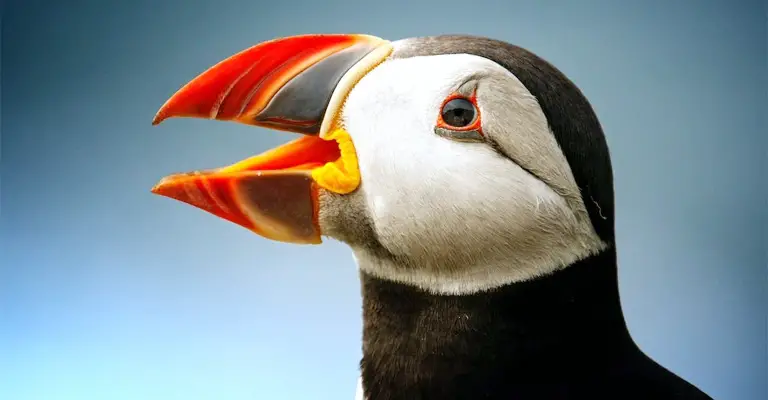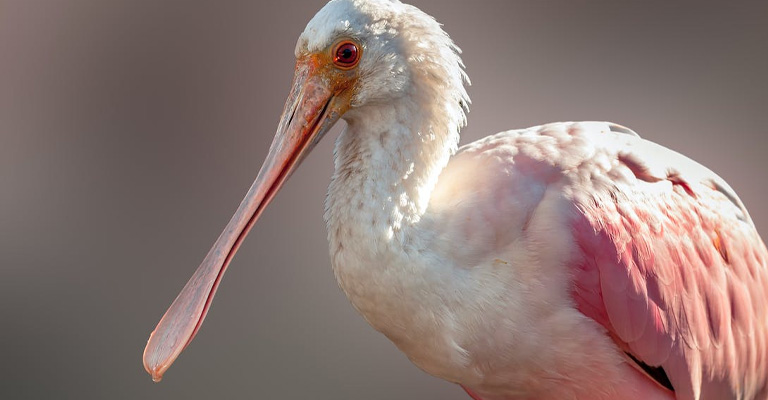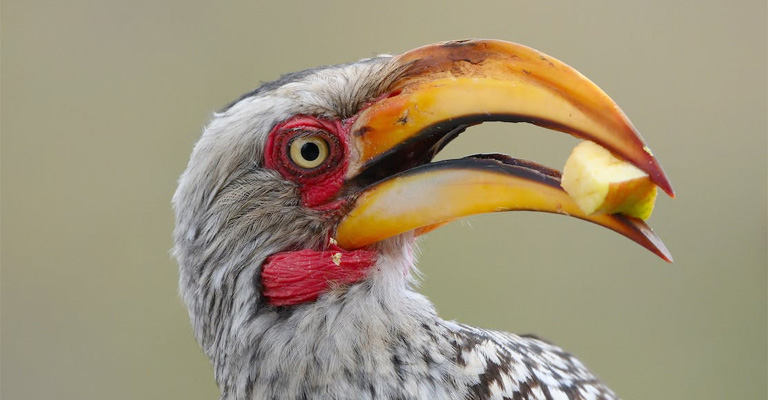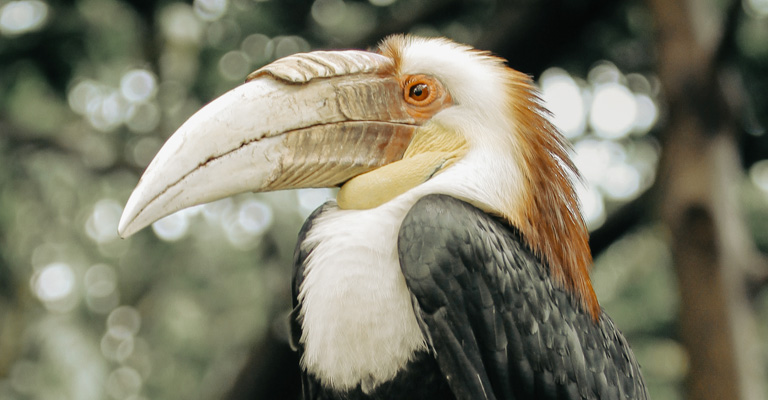Birds, with their remarkable ability to conquer the skies, have evolved an astonishing array of beak shapes and sizes. These beaks are not only essential for feeding but also play a crucial role in survival, enabling birds to exploit various ecological niches.
From the sharp, pointed beaks of raptors to the long, slender beaks of hummingbirds, each species possesses a unique tool that perfectly suits its dietary needs and lifestyle.
Understanding the various types of beaks not only unveils the remarkable evolutionary paths taken by different bird species but also provides insights into their survival strategies.
In this guide, we will delve into the fascinating world of avian adaptation, exploring the different types of beaks in birds and the remarkable ways in which they have evolved to meet the challenges of their environments.

Types of Beaks in Birds
Birds possess a remarkable variety of beak shapes, finely tuned over evolution to match their specific lifestyles and feeding habits. These diverse adaptations enable birds to excel in various ecological niches, highlighting the intricacies of natural selection and adaptation.
Conical Beaks
Conical beaks are robust and versatile, making them common among seed-eating birds. The beaks are short and strong, ideal for cracking open hard seeds.
Finches and sparrows, for instance, possess conical beaks that vary in size to suit different seed types. Some finches have evolved specialized beak shapes to extract specific seeds from their pods.
Hooked Beaks
Hooked beaks are a hallmark of carnivorous raptors like eagles, hawks, and falcons. These sharp, curved beaks are designed for tearing flesh and gripping prey.
The beak’s sharp tip, along with strong jaws, enables raptors to efficiently dismantle their catch. Hooked beaks are a testament to the predator’s adaptation for hunting prowess.
Long, Thin Beaks
Long, thin beaks are often found in birds that feed on insects, nectar, or deep-sea creatures. Hummingbirds, with their elongated, tube-like beaks, are well-suited for sipping nectar from flowers.
Similarly, shorebirds like curlews and ibises use their long, curved beaks to probe mudflats for crustaceans and mollusks, showcasing the remarkable range of beak adaptations.
Spoon-Shaped Beaks

Birds with spoon-shaped beaks are adept at filtering small organisms from water. Ducks and other aquatic birds employ these beaks to strain plankton, insects, and plant matter from the water’s surface.
The flattened, widened tip of the beak increases the surface area for efficient filtration, ensuring a steady diet from aquatic habitats.
Crossbill Beaks
Crossbill beaks are a fascinating example of specialized adaptation for consuming coniferous seeds. These beaks cross over each other at the tip, allowing the birds to extract seeds from pine cones with exceptional precision.
The unique design enables crossbills to access seeds that would be inaccessible to other birds, showcasing the remarkable ways in which beaks can evolve for specific diets.
Chisel Beaks
Chisel beaks are found in woodpeckers and other birds that feed on insects hidden within tree bark. These beaks are strong and chisel-like, allowing the birds to chip away at the bark to access their prey.
Woodpeckers also use their beaks to create nesting cavities in trees, highlighting the multifunctional nature of these adaptations.
Probing Beaks
Probing beaks are long and thin, designed for probing crevices, soil, or other substrates to extract insects, larvae, or small invertebrates.
Birds like the ibis and curlew use their probing beaks to search for food in marshy areas, mudflats, and other soft substrates.
Crushing Beaks
Some birds have robust, thick beaks adapted for crushing hard-shelled prey. For instance, crows and ravens possess strong beaks capable of breaking open nuts and even small bones.
These beaks combine strength with dexterity, enabling these birds to access food sources that might be challenging for others.
Filter-Feeding Beaks
Filter-feeding beaks are specialized for extracting plankton and small organisms from the water. Pelicans, for example, have large, expandable beaks with a pouch that they use to scoop up water and filter out prey.
The unique design of these beaks allows pelicans to take advantage of abundant food sources in aquatic habitats.
Curved Beaks
Curved beaks, often found in parrots and toucans, exhibit an elegant curvature that is both visually striking and functionally versatile. These beaks can be adapted for cracking open seeds, grabbing fruit, or even manipulating objects.
Toucans, known for their large, colorful beaks, use them to reach fruit that might otherwise be out of reach.
What Is the Function of the Different Types of Bird Beaks?

Bird beaks, also known as bills, are incredibly diverse and have evolved to serve a wide range of functions that are closely tied to a bird’s diet, habitat, and behavior.
Here’s a breakdown of the functions of different types of bird beaks:
Conical Beaks
Conical beaks are adapted for cracking open hard shells of seeds and nuts. Finches and sparrows have conical beaks that allow them to break open various types of seeds.
Hooked Beaks
Hooked beaks are designed for tearing flesh and gripping prey. Raptors like eagles, hawks, and falcons have hooked beaks that enable them to efficiently tear apart their prey.
Long, Thin Beaks
Long, thin beaks are used for probing into narrow spaces to extract insects, nectar, or prey. Hummingbirds use their long, tube-like beaks to reach deep into flowers and extract nectar.
Spoon-Shaped Beaks
Spoon-shaped beaks are ideal for filtering food from water, such as plankton or small aquatic organisms. Ducks and other aquatic birds use their spoon-shaped beaks to filter food from the water’s surface.
Crossbill Beaks
Crossbill beaks are adapted for extracting seeds from the cones of coniferous trees. Crossbills have uniquely crossed beak tips that allow them to pry open pine cones and access the seeds inside.
Chisel Beaks
Chisel beaks are designed for chipping away at the bark to access insects hidden beneath.
Woodpeckers use their chisel beaks to drum on trees and extract insects from under the bark.
Probing Beaks
Probing beaks are used to search for insects and invertebrates in crevices, soil, or other substrates. Birds like ibises and curlews use their probing beaks to find food in marshy areas and mudflats.
Crushing Beaks
Crushing beaks are adapted for breaking open hard-shelled prey, such as nuts and bones. Crows and ravens have strong beaks that can crack open nuts and crush small bones.
Filter-Feeding Beaks
Filter-feeding beaks are used to scoop up water and filter out plankton and small organisms. Pelicans use their pouch-like beaks to catch fish and other prey in their expandable throat pouches.
Curved Beaks
Curved beaks are versatile and can be used for a variety of tasks, including grabbing fruit or manipulating objects. Toucans have curved beaks that are used for reaching fruit and other food sources.
The remarkable diversity of beak shapes reflects the incredible adaptability of birds to various ecological niches.
By understanding the functions of different beak types, scientists can gain insights into a bird’s evolutionary history, diet, and the unique challenges it faces in its environment.
How Does the Shape of a Bird’s Beak Help It Survive?

The shape of a bird’s beak is intricately linked to its survival and ability to thrive in its specific ecological niche.
A bird’s beak has evolved over time through the process of natural selection to suit its dietary preferences, feeding techniques, habitat, and other environmental factors.
Here’s how the shape of a bird’s beak helps it survive:
Dietary Adaptations
Different beak shapes are specialized for various types of food sources. For example, a conical beak is perfect for cracking open seeds, while a hooked beak is designed for tearing flesh.
This adaptation allows birds to efficiently obtain the nutrients they need from their preferred foods.
Feeding Techniques
The shape of a beak often matches a bird’s feeding behavior. Birds with long, thin beaks like hummingbirds can reach deep into flowers for nectar, while birds with probing beaks can search crevices for insects. This specialization improves their feeding efficiency.
Habitat Adaptations
Birds that inhabit specific environments have beaks tailored to those surroundings. For instance, birds in aquatic environments might have spoon-shaped beaks to filter food from water, while woodpeckers have chisel-like beaks for extracting insects from tree bark.
Resource Access
The beak shape allows birds to access food resources that might be inaccessible to others. Crossbill beaks, for example, enable these birds to access seeds within tightly closed pine cones that other birds cannot reach.
Competition Avoidance
Different beak shapes can reduce competition between bird species by enabling them to target distinct food sources. This reduces direct competition for the same resources, enhancing their chances of survival.
Predator-Prey Relationships
The beak shape influences a bird’s ability to catch prey or escape predators. A hooked beak helps raptors efficiently catch and tear apart prey, while a pointed beak can help insect-eating birds capture fast-moving insects.
Breeding Success
Some beak shapes are advantageous during breeding. For instance, a strong beak may aid in building nests or protecting young birds from predators.
Niche Specialization
Birds with specialized beaks can occupy specific ecological niches, reducing competition and allowing them to exploit unique food sources.
Foraging Efficiency
The beak’s shape can affect how efficiently a bird forages for food. Birds with beaks adapted to their diet spend less energy and time obtaining their food, which contributes to their overall survival.
Adaptation to Environmental Changes
Over time, changes in the environment can lead to changes in food availability. Birds with adaptable beaks might have an advantage when their preferred food source becomes scarce, allowing them to switch to alternative resources.
FAQs
How do birds with curved beaks use them?
Birds with curved beaks, like toucans, use their beaks to reach and grasp fruit that might be otherwise difficult to access. The curvature also aids in manipulating objects and feeding efficiently.
Why do some birds have flat, wide beaks?
Birds with flat, wide beaks, such as ducks and geese, use them to filter small organisms and food particles from water. The broad surface area enhances their ability to collect food as they swim.
What advantages do birds with short, pointed beaks have?Birds with short, pointed beaks, like warblers, excel at capturing insects in flight. The pointed beak allows them to swiftly snatch insects from the air, facilitating their insectivorous feeding habits.
How do specialized beaks contribute to courtship displays?
In some bird species, beak coloration or size can play a role in courtship displays. For example, male frigate birds inflate their brightly colored throat pouches to attract females during mating rituals.
Are beak shapes influenced by climate and weather conditions?
Yes, environmental factors like climate and weather can influence beak shapes. In colder climates, birds might have thicker, sturdier beaks to handle tougher food sources, while in warmer climates, beaks might be adapted for more delicate tasks like nectar feeding.
Wrapping Up!
The diversity of beak types in birds is a testament to the incredible adaptability of these remarkable creatures.
From the powerful beaks of seed-cracking finches to the delicate, curved beaks of nectar-feeding birds, each species has evolved a specialized tool that allows it to thrive in its specific habitat.
By understanding the various types of beaks and their functions, we gain a deeper appreciation for the intricate relationship between form and function in the natural world.
Through the lens of these beaks, we gain a deeper appreciation for the ingenious ways in which nature crafts solutions to the challenges of existence.
So, the next time you spot a bird with a unique beak, take a moment to marvel at the wonders of evolution and the incredible diversity of life that surrounds us.